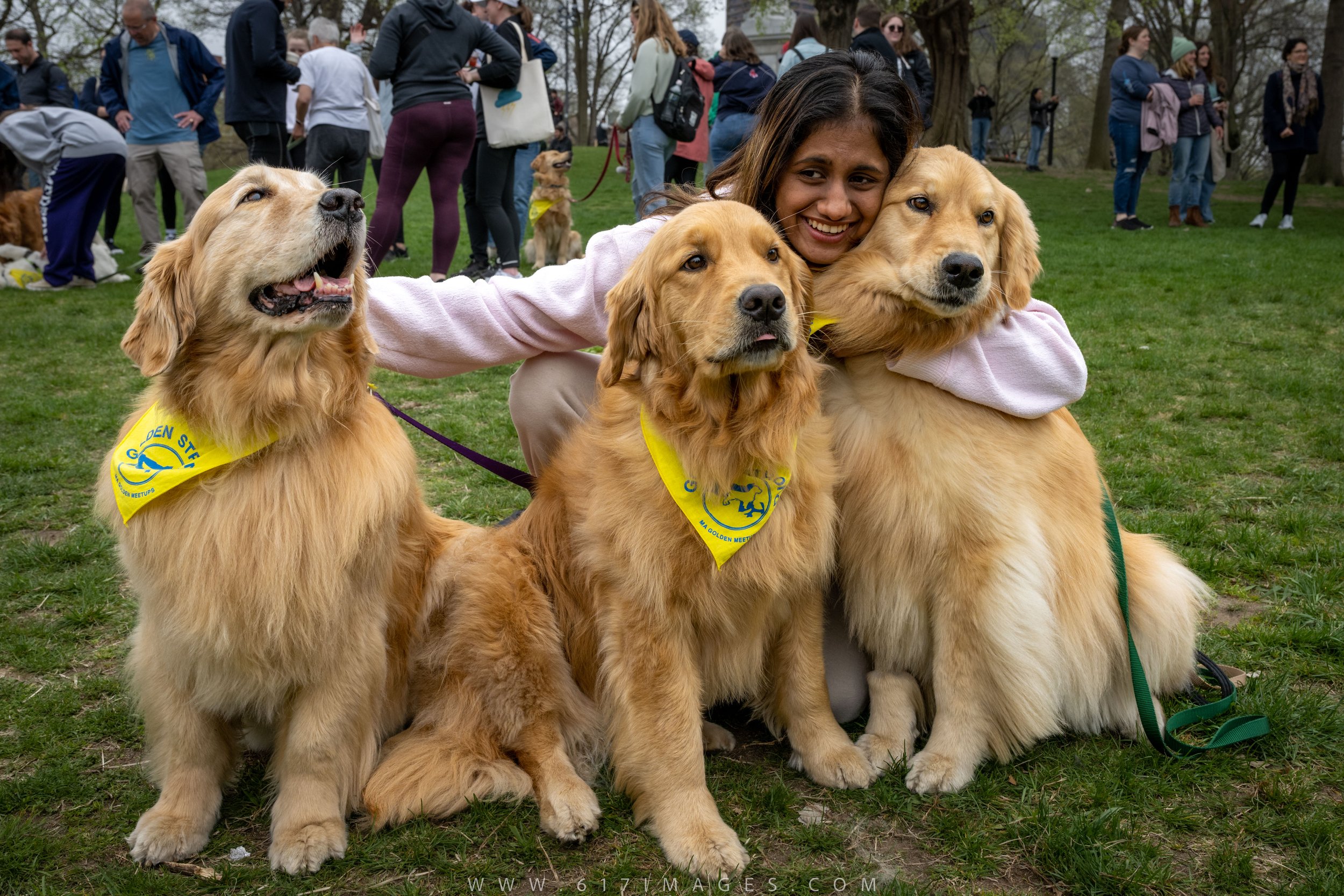The Enduring Bond: Golden Retrievers and the Human Connection
Introduction
Golden Retrievers, with their striking golden coats, playful demeanor, and unwavering loyalty, have captured the hearts of countless individuals worldwide. The profound connection between these beloved canines and their human companions has been the subject of much fascination and scientific inquiry. This essay will delve into the complexities of the Golden Retriever-human bond, examining its historical roots, behavioral characteristics, and therapeutic effects.
Historical Roots and Selective Breeding
The origins of Golden Retrievers can be traced back to the mid-19th century in Scotland, where they were selectively bred by Lord Tweedmouth to create a versatile hunting companion. Golden Retrievers were prized for their exceptional retrieving abilities, gentle nature, and willingness to please. These traits were meticulously passed down through generations, resulting in the breed's characteristic temperament and loyalty.
Behavioral Characteristics and Social Cognition
Golden Retrievers exhibit a range of behavioral characteristics that contribute to their close bond with humans. They are renowned for their affectionate and playful nature, which makes them ideal companions for families with children. Their high levels of intelligence and trainability allow them to form strong bonds with their owners, as they are eager to understand and obey commands.
Moreover, Golden Retrievers possess remarkable social cognition abilities. Studies have shown that they can recognize and distinguish between different human emotions, such as joy, sadness, and anger (Herrmann et al., 2015). This ability allows them to respond appropriately to their owners' emotional needs, providing comfort and solace during difficult times.
Therapeutic Benefits
The human-Golden Retriever bond has therapeutic benefits that extend beyond companionship. Golden Retrievers are widely used as therapy dogs in various settings, including hospitals, nursing homes, and schools. Their gentle presence and unconditional love have been shown to reduce stress, anxiety, and loneliness in individuals suffering from various ailments.
Research has also demonstrated that interacting with Golden Retrievers can promote emotional regulation, empathy, and positive social behaviors in children with autism spectrum disorder (ASD) (O'Haire et al., 2013). The calming and affectionate nature of Golden Retrievers creates a safe and supportive environment for children with ASD to interact with others and develop socially.
Criticisms and Ethical Considerations
While the human-Golden Retriever bond is generally celebrated, it is important to acknowledge certain criticisms and ethical considerations. Some critics argue that the selective breeding of Golden Retrievers for specific traits, such as loyalty and trainability, may have compromised their genetic diversity and increased their risk for certain health problems.
Additionally, the popularity of Golden Retrievers has led to increased demand and unethical breeding practices, such as puppy mills and overbreeding. Prospective owners must be aware of these issues and take appropriate steps to adopt from reputable breeders who prioritize the health and well-being of the dogs.
Conclusion
The Golden Retriever-human bond is a complex and multifaceted phenomenon that has captivated the hearts of individuals worldwide. Through historical selective breeding, Golden Retrievers have inherited behavioral characteristics that foster strong bonds with their owners, including affection, intelligence, and high levels of social cognition. These traits make Golden Retrievers ideal companions for families, therapy animals, and individuals seeking emotional support.
While the bond between Golden Retrievers and humans is undeniable, it is essential to remain cognizant of potential criticisms and ethical considerations surrounding the breeding and ownership of these beloved dogs. By approaching the human-Golden Retriever bond with care, compassion, and responsible ownership, we can ensure the well-being of these remarkable canines and nurture the enduring bond that makes them such cherished members of our lives.
References
Why Rottweilers Are Great For Protection And Safety
The Beagle’s Role In Therapy And Emotional Support
The Adaptability Of Australian Mist Cats To New Environments



